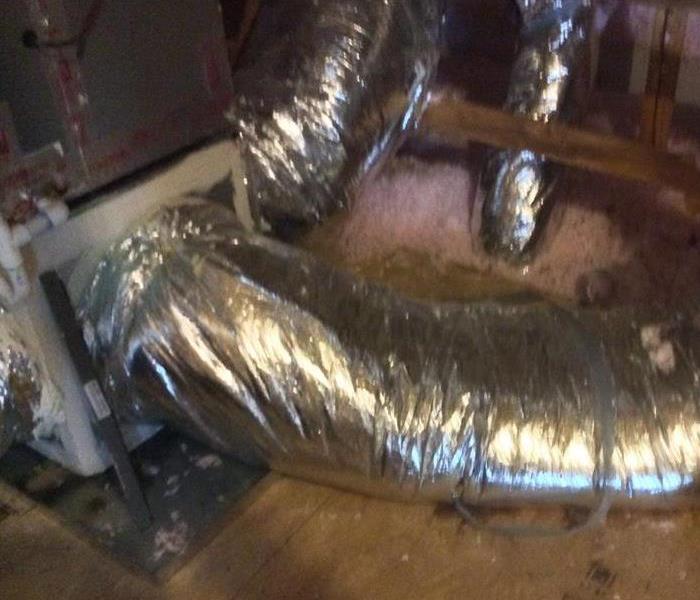A/C Leaks - How to Prevent
9/10/2018 (Permalink)
 A/C Air Handlers are often located in attics, if the drain line clogs and the wet drip pan overflows this can result in damage to the rooms below.
A/C Air Handlers are often located in attics, if the drain line clogs and the wet drip pan overflows this can result in damage to the rooms below.
In the south our A/C systems are often working overtime to keep us cool. Occasionally your A/C system will have a leak and depending on the location of your air handler this can result in water damage to your home. Water leakage from a central air conditioner is almost always related to the condensate drip pan and drain system, located at the indoor air handler inside the house. Since the A/C evaporator coil inside the air handler can generate over 20 gallons of condensation on a humid day, the potential for substantial water damage in the event of a malfunction is clear. How can you avoid A/C water leaks?
Check the condensate drip pan regularly – This large flat pan located underneath the indoor air handler catches condensate as it drips off the A/C evaporator coil. Collected condensate drains out of the pan into a drain line usually plumbed into the household sewer line or discharges somewhere outside the house. If it’s cooling season and the air conditioner is running, the drain pan will likely be wet. However, you should not notice standing water in the pan. This usually indicates a clogged or sluggish condensate drain line and an impending damaging overflow. Also, look around the perimeter of the pan for signs of leakage such as wet spots or puddles. Drip pans may crack or corrode with age, seeping small amounts of water gradually. Contact a qualified HVAC service provider if you see standing water or evidence of leakage.
Consider an automatic shut-off switch – To avoid water damage from the condensate system, an automatic shutoff switch detects excess standing water in the drain pan and turns off power to the air conditioner before an overflow occurs.
Get regular A/C service – Mold growth inside the wet drip pan is a frequent cause of clogs in the drain line. Annual preventive maintenance by a qualified HVAC technician includes inspecting the condensate drain system, cleaning the pan and installing time-release biocide tablets in the pan to inhibit mold and algae growth all season long.
If you have water damage from your HVAC system call SERVPRO of Gainesville at 770-536-1010

 24/7 Emergency Service
24/7 Emergency Service